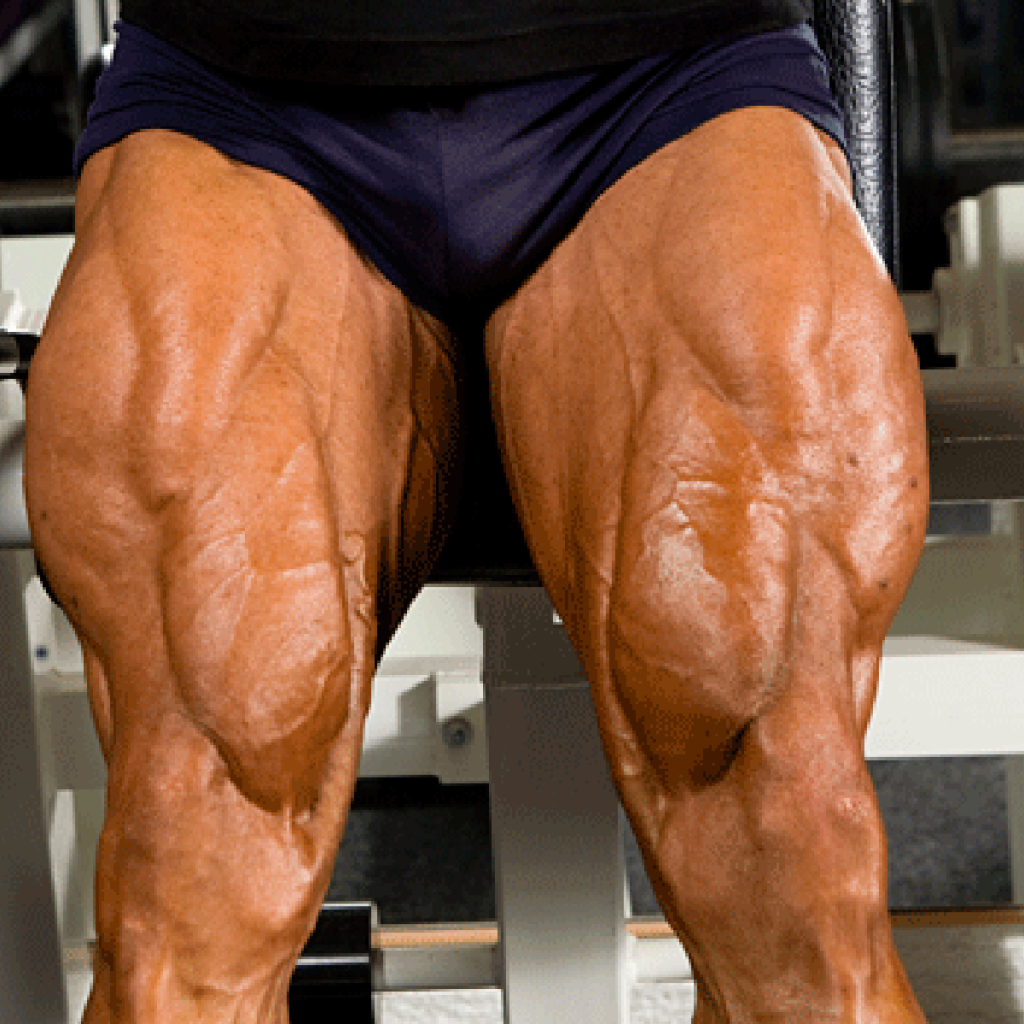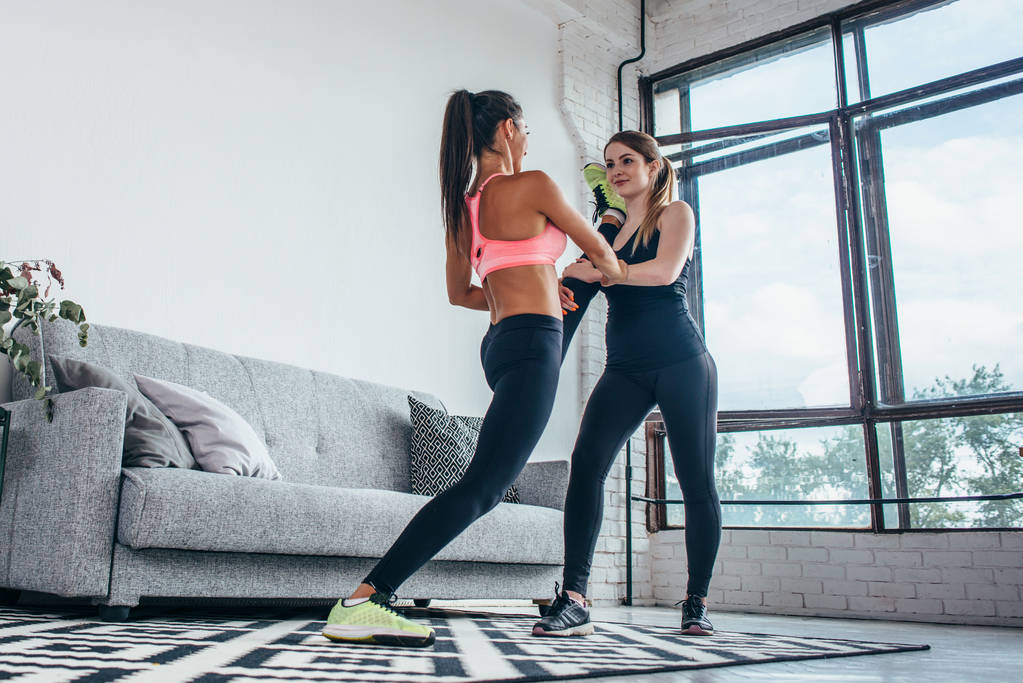Discover a step-by-step guide on how to effectively build and strengthen your adductor muscles, targeting your inner thighs.
How to Build Adductor Muscles: A Step-by-Step Guide to Strengthening Your Inner Thighs
Are you tired of skipping leg day and neglecting your inner thighs? Building strong adductor muscles not only improves your overall lower body strength but also enhances your mobility and stability. In this step-by-step guide, we will explore the anatomy of adductor muscles, the benefits of strengthening them, and provide you with a variety of exercises to help you achieve those toned inner thighs you’ve always dreamed of. So, let’s dive right in!

Understanding Your Adductor Muscles
Before we embark on our journey to stronger thighs, let’s take a moment to understand the role these adductor muscles play in our body movement. These powerful muscles are responsible for pulling your legs together, allowing you to perform actions like walking, running, and even dancing the night away. Without well-developed adductors, your movements may become limited, affecting your overall performance in various physical activities.
The Role of Adductor Muscles in Body Movement
Picture yourself strutting down the street with confidence. It’s your adductor muscles working harmoniously that enable you to bring your legs back together with each step, maintaining balance and stability. So, building strong adductors not only improves your physical appearance but also enhances your everyday mobility.
But let’s not stop there. The adductor muscles not only assist in leg movements but also contribute to core stability. When you engage your adductors, they help stabilize your pelvis and spine, allowing for better posture and reducing the risk of injury. So, by strengthening your adductor muscles, you’re not just improving your leg strength but also enhancing your overall body stability.
Furthermore, strong adductors can have a positive impact on your athletic performance. Whether you’re a basketball player driving to the hoop or a soccer player making quick lateral movements, having well-developed adductor muscles can give you an edge. These muscles provide the necessary power and control to execute explosive movements and change direction swiftly, giving you a competitive advantage on the field or court.
The Anatomy of Adductor Muscles
Now that we understand the importance of these muscles, let’s dive deeper into their anatomy. The adductor muscles consist of five main muscles: adductor longus, adductor brevis, adductor magnus, gracilis, and pectineus. Each of these muscles plays a vital role in different adduction movements. By strengthening all these muscles, you can achieve a well-rounded inner thigh workout.
The adductor longus is the longest of the adductor muscles and runs from the pelvis to the thigh bone. It primarily helps in bringing the thigh towards the midline of the body. The adductor brevis, on the other hand, is a shorter muscle located just below the adductor longus. It assists in the same movement but also aids in stabilizing the pelvis during walking or running.
Next, we have the adductor magnus, which is the largest of the adductor muscles. It not only contributes to thigh adduction but also assists in hip extension. This muscle plays a crucial role in movements like squatting, lunging, and jumping. The gracilis muscle, located on the inner side of the thigh, helps in adduction as well as flexion of the hip and knee. Lastly, the pectineus muscle, situated at the top of the inner thigh, aids in thigh adduction and hip flexion.
Understanding the individual functions of each adductor muscle allows you to target them effectively during your workouts. By incorporating exercises that engage all these muscles, you can ensure a comprehensive and balanced training routine for your inner thighs.
The Importance of Strong Adductor Muscles
Building strong adductors has numerous benefits beyond just basking in the glory of well-defined inner thighs. Let’s explore some of these perks to motivate you in your quest for adductor greatness!
When it comes to lower body strength, strong adductors play a crucial role. These muscles, located on the inner side of your thighs, are responsible for bringing your legs together. By incorporating adductor exercises into your routine, you’ll notice improvements in your ability to perform squats, lunges, and other leg-focused exercises. Not only will you be able to lift heavier weights, but you’ll also experience enhanced stability and power in your lower body movements.
But the benefits of strong adductors go beyond just physical strength. Well-developed adductors can also help prevent injury. By improving your stability and balance, these muscles reduce the strain on other supporting muscles, such as the glutes and hamstrings. This can be particularly beneficial for athletes and individuals who engage in activities that require quick changes in direction or lateral movements.
Benefits of Strengthening Your Inner Thighs
First and foremost, strong adductors contribute to better overall lower body strength. By incorporating adductor exercises into your routine, you’ll notice improvements in your ability to perform squats, lunges, and other leg-focused exercises. Additionally, well-developed adductors can also help prevent injury by improving your stability and balance, reducing the strain on other supporting muscles.
Furthermore, strong adductors can enhance your athletic performance. Whether you’re a runner, a soccer player, or a dancer, having strong inner thighs can significantly improve your agility and speed. These muscles play a crucial role in lateral movements, allowing you to change direction quickly and efficiently. By strengthening your adductors, you’ll be able to move with greater ease and precision, giving you a competitive edge in your chosen sport or activity.
Moreover, strong adductors can also contribute to better posture. These muscles help maintain proper alignment of the pelvis and hips, which in turn, promotes a neutral spine position. By keeping your pelvis stable and your spine aligned, you can reduce the risk of developing lower back pain and other postural issues. So, not only will your inner thighs look great, but your overall posture and spinal health will also benefit from a strong set of adductors.
Risks of Neglecting Your Adductor Muscles
On the flip side, neglecting your adductor muscles can lead to imbalances in your lower body. Weak adductors can cause your knees to cave inward during exercises, putting unnecessary stress on your joints and potentially leading to injury. By adding specific adductor exercises to your fitness routine, you can address these imbalances and maintain proper alignment.
Furthermore, weak adductors can also affect your overall athletic performance. Without sufficient strength in these muscles, you may find it challenging to execute movements that require stability and control, such as lateral lunges or side steps. This can limit your ability to perform at your best and increase the risk of compensatory movements, which may lead to muscle imbalances and overuse injuries.
Additionally, neglecting your adductor muscles can impact your everyday activities. Simple tasks like walking, climbing stairs, or getting out of a chair can become more challenging if your inner thighs lack strength. By incorporating adductor exercises into your fitness routine, you can improve your functional strength and make daily movements feel easier and more effortless.
Preparing for Your Adductor Workout
Now that you understand the importance of strong adductors, let’s dive into the practical aspects of preparing for your adductor workout. Remember, safety first!
Before you embark on your adductor workout journey, it’s crucial to have a solid understanding of the muscles you’ll be targeting. The adductors are a group of muscles located on the inner side of your thighs. They play a vital role in stabilizing your hips and thighs, allowing for movements such as bringing your legs together or crossing them.
Now, let’s talk about some safety measures you should consider before starting your adductor workout routine.
Safety Measures to Consider
As with any exercise regimen, it’s essential to prioritize safety. Before starting any new workout routine, consult with a healthcare professional to ensure that you are physically fit to perform adductor exercises. They can assess your overall health and provide personalized advice based on your specific needs.
Once you have the green light from your healthcare professional, it’s time to focus on warming up. Warming up is a crucial step in any workout routine as it helps increase blood flow to your muscles, loosens up your joints, and prepares your body for the upcoming physical activity.
Consider incorporating dynamic stretches into your warm-up routine. These stretches involve moving parts of your body through a full range of motion, helping to activate and warm up the adductor muscles. Examples of dynamic stretches for your adductors include leg swings, lateral lunges, and side leg raises.
Additionally, always remember to listen to your body during your adductor workout. If you experience any pain or discomfort, it’s essential to stop and reassess your form or modify the exercise to avoid potential injuries.
Essential Equipment for Adductor Exercises
While you don’t necessarily need a fully equipped gym to work on your adductors, having a few key pieces of equipment can help enhance your workouts and add variety to your routine.
Resistance bands are a versatile and affordable tool that can be used to target your adductors effectively. These bands provide resistance throughout the entire range of motion, helping to strengthen and tone your inner thighs. You can use them for exercises like standing adductor squeezes, seated leg presses, or lateral band walks.
Another useful piece of equipment is a stability ball. This large inflatable ball can be used to challenge your adductors in various ways. For example, you can perform adductor squeezes by placing the stability ball between your knees and squeezing it together. This exercise not only targets your adductors but also engages your core muscles for added stability.
Ankle weights are another great addition to your adductor workout routine. By strapping these weights around your ankles, you can increase the resistance and intensity of exercises like side leg lifts or lying adductor raises. Start with lighter weights and gradually increase the resistance as your strength improves.
Remember, the key to a successful adductor workout is to keep challenging your muscles while maintaining proper form. By incorporating these essential pieces of equipment into your routine, you can add variety and intensity to your adductor exercises, helping you achieve your fitness goals.
Step-by-Step Guide to Adductor Exercises
Now it’s time to roll up your sleeves and get down to business with a detailed guide to adductor exercises. Whether you’re a beginner or an advanced fitness enthusiast, we’ve got you covered!
Warm-Up Exercises for Your Adductor Muscles
First things first, a proper warm-up is crucial for preparing your adductor muscles for the workout ahead. Start with dynamic stretches such as leg swings, side lunges, and bodyweight squats. This will help increase blood flow, improve flexibility, and reduce the risk of injury.
Beginner-Friendly Adductor Exercises
If this is your first journey into the world of adductor training, fear not! We have some beginner-friendly exercises to help you ease into it. Some examples include seated butterfly stretches, side-lying leg lifts, and the classic sumo squat. These exercises target your adductor muscles while keeping the intensity at a comfortable level.
Advanced Adductor Exercises
For those seeking an extra challenge, we have a selection of advanced adductor exercises that will push your limits. Try exercises like lateral lunges with dumbbells, Romanian deadlifts, and Swiss ball squeezes. These exercises will challenge your adductor muscles, helping you take your inner thigh strength to new heights.
Maintaining Your Adductor Strength
Now that you’ve put in the hard work to build strong adductor muscles, it’s essential to maintain that strength. Consistency is key!

Incorporating Adductor Exercises into Your Regular Routine
To keep those inner thighs in top shape, aim to incorporate adductor exercises into your regular fitness routine. Aim for at least two to three sessions per week, focusing on both strength and flexibility exercises. By doing so, you’ll maintain your hard-earned progress and continue reaping the benefits of strong adductors.
Tips for Preventing Adductor Muscle Injuries
Remember, prevention is always better than cure. To minimize the risk of adductor muscle injuries, listen to your body and avoid pushing yourself too hard too soon. Gradually increase the intensity and duration of your adductor workouts to allow your muscles to adapt. And don’t forget to prioritize rest and recovery, giving your adductor muscles the time they need to repair and grow stronger.
In Conclusion
Building strong adductor muscles is not only beneficial for your physical well-being but also contributes to your overall lower body strength and stability. By following this step-by-step guide, understanding the anatomy of your adductors, and incorporating a variety of exercises into your routine, you’ll be well on your way to achieving those impressive inner thighs. Remember, consistency and dedication are the keys to success. So, lace up those sneakers, embrace the burn, and get ready to show off those strong, toned adductors!







